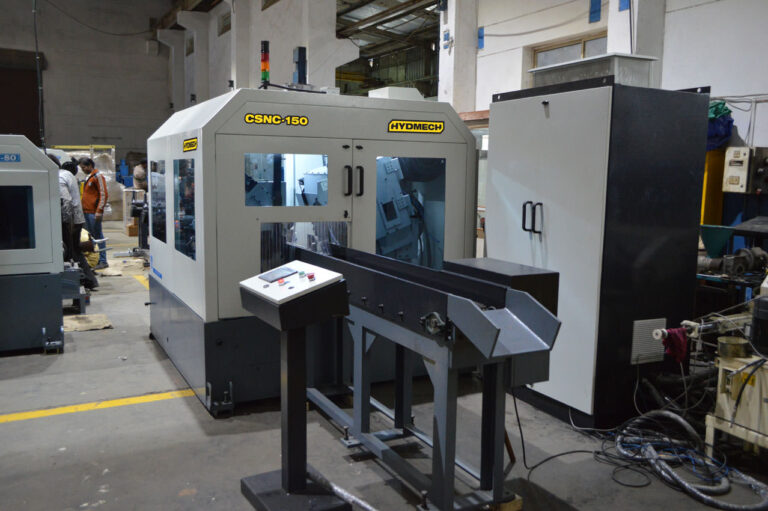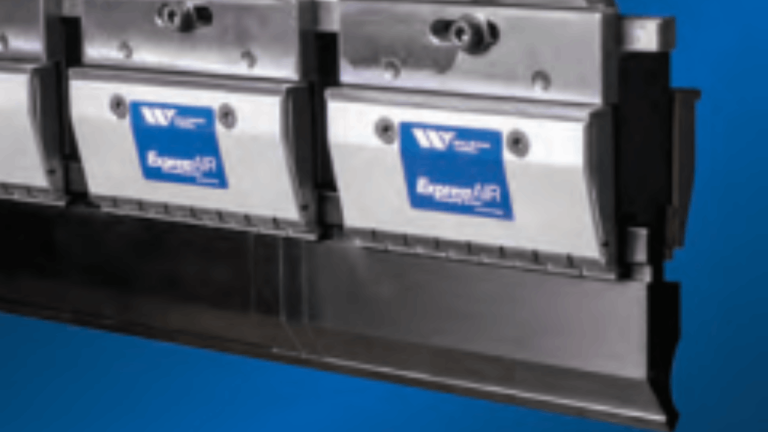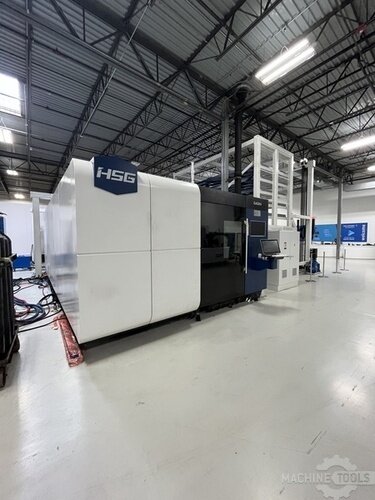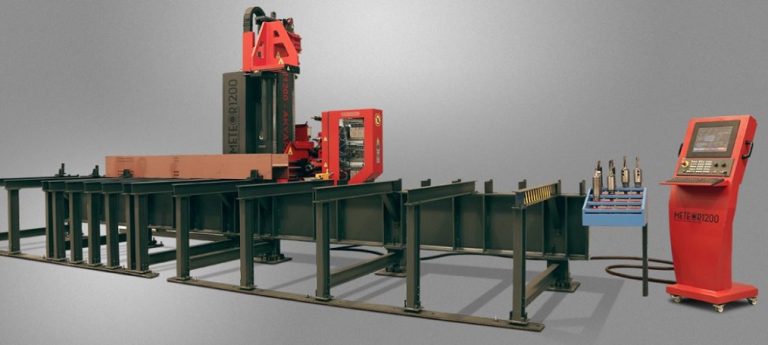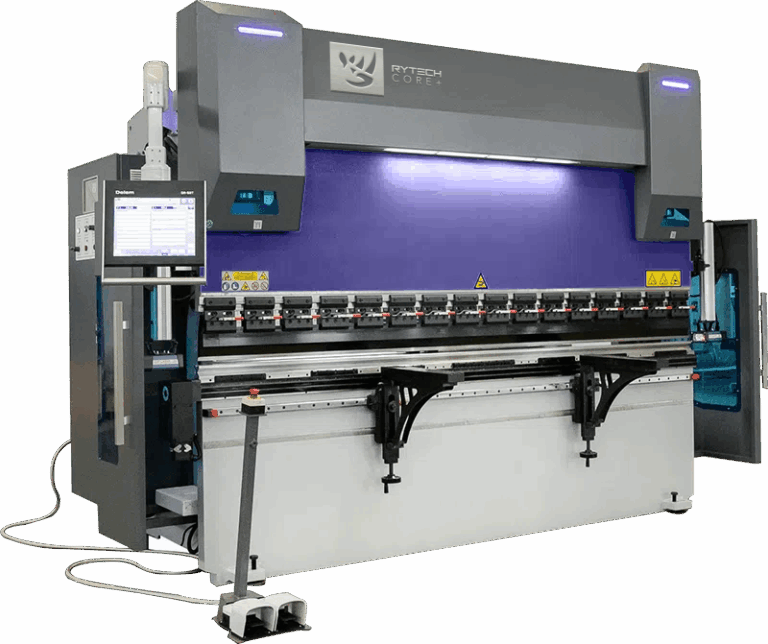I’ve dedicated much of my career to forging strong alliances between innovative machinery solutions and forward-thinking manufacturers. As the VP of Sales at Mac-Tech, I’ve found that building relationships and delivering genuine value is at the heart of what I do. In my experience, Ermaksan’s advanced fabrication and automation offerings have continued to impress me with their efficiency, precision, and reliability. Working closely with clients, I draw on my background to bridge the gap between cutting-edge solutions and real-world manufacturing goals.
Over the years, I’ve come to appreciate how important it is to approach each partnership with an open mind rather than a pre-planned pitch. My role is to listen intently, discover the unique concerns a shop might be facing, and propose technology that directly addresses those challenges. When people ask what keeps me driven in this field, the answer is simple: it’s the satisfaction of watching our clients succeed with the right tools in their hands.
Each time I help set up an Ermaksan solution, I see tangible proof of how modern automation enhances productivity. From lasers that cut intricate shapes with minimal waste to press brakes that minimize setup time and errors, these machines empower manufacturers to scale up, refine quality, and compete on tight deadlines. Collaboration, honest guidance, and a solutions-focused mindset all keep me grounded in my mission to serve.
My Consultative Method: Prioritizing Client Needs
I believe extraordinary results start with open and honest discussions. When I connect with a potential partner, I ask detailed questions about their workflow, production rates, and specific growth objectives. By drilling down into the specifics of their operations, I’m able to paint an accurate picture of what their current processes look like—and which improvements would have the biggest impact.
In these early stages, I avoid rushing into machine specs or complex system details. Instead, I focus on drawing out insights that let me understand the day-to-day realities a fabricator faces. This way, my team can tailor our approach to suit their business objectives, whether that means handling higher production volumes or increasing quality and accuracy.
Once I have a solid grasp of a company’s current processes, I can confidently introduce feasible solutions. And the beauty of working with Ermaksan is that their suite of machinery can often be customized to fit perfectly within a facility’s footprint. It’s about finding an ideal match rather than forcing something new for the sake of newness.
Analyzing Manufacturing Goals for Tailored Solutions
Every shop floor has its own DNA, composed of variables like cycle times, staffing, budgets, and product complexity. My first goal is to assess how existing processes align with a business’s overarching vision. Because the stakes are high, I rely on accuracy in my evaluations to recommend the right Ermaksan equipment, such as laser cutting systems, press brakes, or plasma solutions.
Clients frequently share that they’re seeking ways to maximize ROI while minimizing downtime. That’s precisely where my experience in automation and precision fabrication comes into play. By spotting inefficiencies and areas of potential improvement, I can guide them toward investments that pay off in both the short and long term.
It’s always been key for me to balance technology trends with practical outcomes. Yes, robust analytics and cutting-edge software help, but my insights come from hands-on learning over the years. Identifying if a certain machine requires additional tooling or if a production line can benefit from robotic integration keeps the conversation actionable and relevant.
Deploying Ermaksan Innovations for Optimal Efficiency
When I introduce Ermaksan’s technology to a client, I do it with an appreciation for their entire workflow. For instance, if a shop focuses on intricate metal components, I might propose laser cutting solutions with features that allow rapid changeovers and exceptional precision. This technology streamlines production, cuts material waste, and reduces the risk of errors that often creep in with manual processes.
Automation also plays a big role, and Ermaksan consistently delivers on that front. By adding automated loading and unloading systems or robotic handlers, we can cut cycle times and relieve skilled operators from repetitive tasks. My teams and I make sure to set up a phased implementation plan, starting small if necessary, so the transition is smooth and cost-effective.
Of course, technology is only one piece of the puzzle. I believe in supporting each system’s integration with thorough training and reliable service. From user-friendly controls to performance monitoring, these solutions must seamlessly integrate into a shop’s daily operations. Whether it’s laser or press brake technology, my goal is to see the machines elevate the entire production cycle.
ERMAKSAN GEN3 3015 SIDE LOAD 4KW
20/21 EVOIII 2600-100 Hybrid CNC Press Brake
- Tonnage: 110 Ton
- Bed Length: 8.5′
- Between Housings: 82″
Ensuring Lasting Impact through Comprehensive Support
Over the years, I’ve developed a deep respect for the value of ongoing collaboration. Once a machine is up and running, that’s just the beginning. My approach emphasizes thorough training sessions, follow-up visits, and clear communication channels for troubleshooting any potential hiccups. Keeping lines of communication open fosters trust and ensures the solutions continue to deliver as expected.
Maintaining relationships also allows me to anticipate a client’s evolving needs. As their business grows, new demands—like higher output, more complex cuts, or multi-shift production—may arise. Being attuned to these shifts helps me offer proactive recommendations, whether it’s for an upgrade, expansion, or entirely new piece of equipment.
I want every client I work with to see their investment in Ermaksan as a long-term game-changer, not just a quick fix. By combining the right technology with careful planning, training, and follow-through, I reframe how manufacturers handle their workload. Ultimately, it’s all about peace of mind: knowing they have a dependable partner who’s always looking out for their best interests.
FAQ
How does automation increase my production capacity?
Automation minimizes manual handling and accelerates repeatable tasks, allowing you to push out more products in less time without sacrificing quality.
What types of Ermaksan machines would be best for smaller shops?
We often recommend starting with a compact laser cutting system or a small-to-mid-sized press brake, which still provide the precision and efficiency of larger machines without overwhelming your operations.
Are Ermaksan’s solutions customizable for specialized production?
Absolutely. One of Ermaksan’s strengths is the ability to tailor machine configurations and tooling options to fit your production requirements.
What sort of ROI can I expect on these investments?
Calculating ROI depends on factors like production volume, materials, and labor costs, but many clients see payback in under two years thanks to higher output and reduced waste.
Is training required to operate these machines effectively?
While the machines are user-friendly, training sessions can be hugely beneficial. These sessions ensure operators fully understand the equipment’s capabilities and safety features.
I feel privileged to guide my clients as they explore Ermaksan’s remarkable solutions for automation and precision fabrication. If you’re ready to take the next step, I encourage you to reach out so we can discuss your specific goals and the best strategies for achieving them.
Get Weekly Mac-Tech News & Updates



